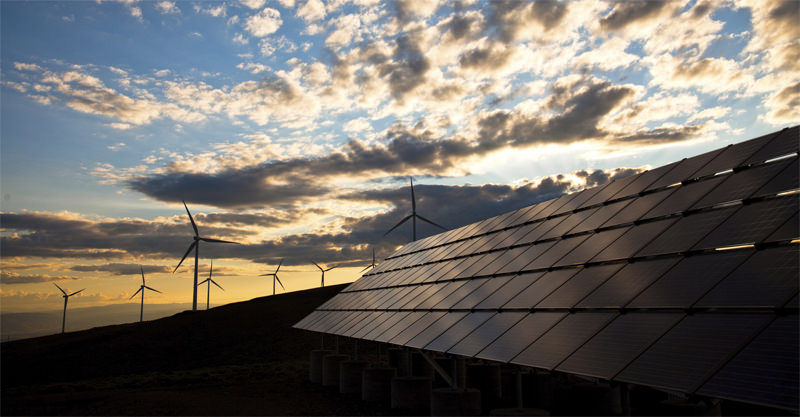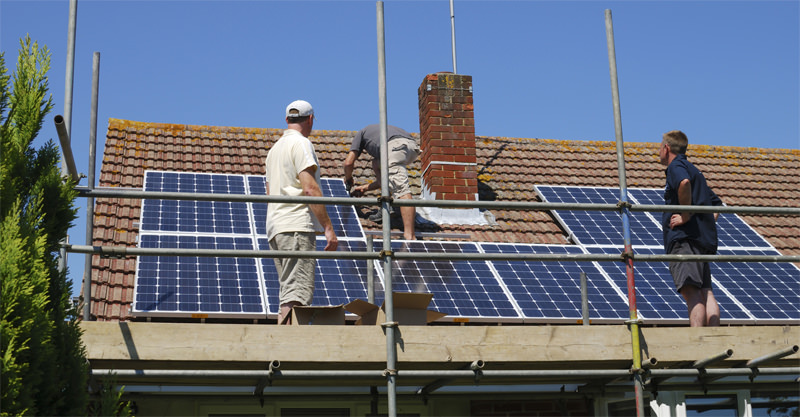You’re sitting in your bunker after the rest of the world finally went to hell. But you’re not too worried, because you’re prepared. You’ve got enough food for decades. You have a kick-ass water filtration system and an underground well. You’ve just worked the last chinks out of the aquaponics system.
Just as you’re about to relax, your perimeter alarms go off. You check your cameras… Bandits. “Oh, no” you think and then it hits you: They must have seen your solar panels.
The above scenario is actually a concern I’ve encountered while researching the disadvantages of solar power. On a more serious note, though. We all hear how wonderful solar energy is, but what are the potential disadvantages of using solar energy?
1. Solar Panel Cost
Quite simply, cost is the biggest downside most people are going to encounter when considering replacing some or all of their electricity consumption with a solar energy system.
People selling solar will be quick to point out that eventually your solar system will pay for itself, after which it’ll be pure profit.
But even if you have the money, on average you’re looking at a repayment period of about 10 years or more. This is also a best case scenario. If something breaks, your repayment period increases.
Besides the actual cost of the system there are all your incidental costs as well. There will be an installation cost to get it going. If something goes wrong, you’ll need a technician to come have a look at it. You may know enough to look after it yourself, but then you’re setting yourself up for an investment in time, instead of money. Depending on where you live there may be more time investments like clearing the snow or leaves off and trimming trees that may overhang the array. Oh, and let’s not forget the insurance.
It is possible to get away cheaper with DIY solar panels, but as always with do it yourself project what you don’t pay with money you pay with time and effort.
Finally, when it comes to the cost of a solar panel system, of course you also have to put it in relation to the cost other energy sources. What would it cost to stay on the grid and shell out money to the energy company for the next 20 years? And if you have a good location, what would it cost to generate the same amount of power with wind turbines?
2. Reliability and Efficiency

Solar panels are just expensive paperweights when the sun doesn’t shine.
To get around this you have to do one of two things: You have to stay on the grid and get power from your utility at night or in cloudy weather, or you have to store some of the power you generate in the day.
This means you have to pay even more for a battery storage system or something similar to save your electricity. If you do this, you will most likely have to slash your power consumption at night to prevent you from running out. Which can be a problem in areas where not having power is the difference between baking or freezing.
As if this wasn’t enough of a problem, anything which affects the amount of sunlight you get reduces how much electricity you get. This means that rainy days, cloudy days, big trees, snow and even dust will not play nice with your solar system and reduce how much power you get.
3. Space

You’re looking at about 240 sq. feet roof space for an average system.
You need to know how much electricity you use: the average is about 11,000 kWh per year in the USA and Canada. So taking into account daylight, you’ll need about a 4kW system, on average. You also have to factor in additional space to put the inverter and related equipment, plus more space for batteries if you go with a storage system.
So you’re looking at about 240 sq. feet roof space and the space in your house, garage or outbuilding to put the rest of the system. You could opt to put everything on the ground, in which case it’ll take up space on your lawn, or wherever you decide to put it.
Seems pretty simple, but it’s not. The area you pick can’t be shaded. Ideally, it must be south-facing if it’s on your roof. If you can’t meet the “ideal” conditions, your efficiency goes down and you need a bigger system.
4. Environmental impact
This issue is something that I’ve often seen people gloss over when talking about the negative aspects of solar. Low-tech Magazine has a fascinating article on the environmental effects of Solar. It’s also quite long and technical, so I’ll summarize it for you. When you take into account the manufacture of the resources you need to make and put together PV cells:
… the total CO2 debt of a solar installation is 600 to 3,140 kilograms of CO2 in sunny places, and 1,200 to 6,280 kilograms of CO2 in less sunny regions. These numbers equate to 2 to 20 flights Brussels-Lissabon (up and down, per passenger) – source CO2 emissions Boeing 747.”
This doesn’t include the environmental impact of packaging, transportation and installation. And like any other manufacturing process there’s the cost in water consumption.
As if that’s not enough, the Union of Concerned Scientists provide us with this handy list of dangerous chemicals that go into the manufacture of your PV cells:
- hydrochloric acid
- sulfuric acid
- nitric acid
- hydrogen fluoride
- 1,1,1-trichloroethane
- acetone
And for thin-film cells, add:
- gallium arsenide
- copper-indium-gallium-diselenide
- cadmium-telluride
Renewable Energy Focus13 has a very insightful article on something else you have to consider: What happens when you retire your PV array? It seems that although there are a lot of ideas about what should happen to retired PV cells upon retirement, there’s no clear direction on the issue and no regulation to make sure solar cells are actually recycled on retirement.
And to round off, though many countries mandate safety measures to protect worker health, not all do. The inhalation of silica dust is an ongoing and serious problem for people who make PV cells for a living. Long-term exposure leads to silicosis, which is characterized by fever, shortness of breath, weight-loss and respiratory failure. It also makes sufferers more susceptible to tuberculosis.
While it may seem from this article that I wanted to discredit solar energy, this is not the case. In fact, if you want to reduce your dependence on the power grid then solar energy is still one of the top options. My purpose is rather to inform you and to allow you to make a rational decision instead of a media-hyped one.
Knowing about some of these issues may help you make an ethical choice: Do you go with the company that doesn’t protect their workers? Do they have a recycling program in place? Do they safely dispose of dangerous chemicals?
So do your homework and be informed before making a choice!
If you have any questions about solar energy, ask away in the comments below!


